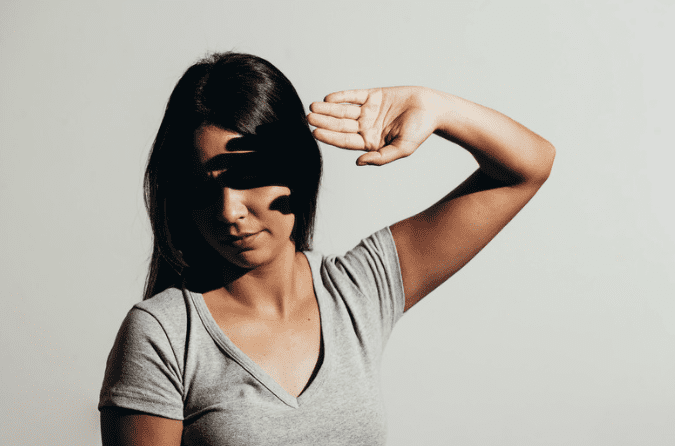What Is Photophobia? Let’s Shed Some Light (But Not Too Much)
Hey there, fellow light-sensitive friends! Ever walked out of a dark movie theater into blinding sunlight and felt like a vampire avoiding a stake through the heart? Yeah, that’s photophobia for you—minus the fangs and cape, hopefully. Let’s break down what photophobia really means, why it happens, and how we can tackle it without resorting to living in a cave. And hey, since we’re based in Vienna, Virginia, we’ll even toss in a few reasons why swinging by Liberty Laser Eye Center might just save your day (and your retinas).
So, What Is Photophobia?
Photophobia isn’t a fear of photos (sorry, Instagrammers). In medical terms, it’s an extreme sensitivity to light that makes your eyes scream, “NOPE!” when exposed to bright sources like sunlight, fluorescent bulbs, or even your phone screen at 2 a.m. (We’ve all been there). It’s not a disease itself but a symptom of other conditions—think of it as your eyes’ dramatic way of saying, “Something’s up!”
Why does this happen?
- Nearsightedness, farsightedness, or astigmatism can strain your eyes, making light feel harsher.
- Conditions like migraines, dry eye syndrome, or keratoconus (a thinning cornea) often crash the party.
- Post-Lasik recovery or other eye surgery types might leave your peepers temporarily sensitive.
- Even sunburned eyes (yes, that’s a thing) from forgetting sunglasses at the beach.
FYI: If you’re squinting at your screen right now, maybe it’s time for an Annual Eye Exam. Just saying.
“Why Do My Eyes Hate Light?” Let’s Get Technical
Your eyes are basically high-tech cameras. When the “aperture” (your pupils) can’t adjust properly, light floods in like a broken dam. Here’s where things get spicy:
Common Culprits Behind Photophobia
- Migraines: Light becomes Public Enemy No. 1.
- Dry Eye Syndrome: No tears? More glare.
- Infections or Inflammation: Pink eye, uveitis—you name it.
- Neurological Issues: Like meningitis or concussions.
- Post-Surgery Sensitivity: After Lasik eye surgery or Advanced PRK Surgery, your eyes might need time to chill.
Pro Tip: If you’re in the Washington DC area and photophobia’s cramping your style, our team at Liberty Laser Eye Center uses Wavefront Analysis and Topography-Guided Lasik Surgery to minimize post-op light sensitivity. Because nobody wants to rock sunglasses indoors forever.
Photophobia + Eye Conditions: A Match Made in… Well, Not Heaven
Turns out, photophobia loves to tag-team with other eye issues. Let’s connect the dots:
Nearsightedness, Farsightedness, and Astigmatism
Uncorrected vision problems force your eyes to work overtime, making light feel like a personal attack. Lasik eye surgeons (like ours in Vienna, VA wink) can often fix these with a quick laser zap.
Presbyopia and Keratoconus
- PresbyLASIK Surgery tackles age-related focusing issues (looking at you, readers over 40).
- Corneal Cross-Linking strengthens thin corneas caused by keratoconus.
Fun Fact: Our Dry Eye Treatment at Liberty Laser Eye Center has a success rate that’ll make you want to high-five us.
How to Kick Photophobia to the Curb
Step 1: Protect Those Peepers
- Sunglasses: Go for polarized lenses. Bonus points for looking cool.
- Blue Light Filters: For screens. Because your 3 a.m. TikTok habit isn’t going anywhere.
- Adjust Lighting: Dimmer switches = your new BFF.
Step 2: Treat the Root Cause
- Dry Eye Treatment: Artificial tears, punctal plugs—we’ve got options.
- Lasik Recovery Tips: Follow your surgeon’s advice (psst… our Lasik doctors in Northern Virginia are pretty great at this).
- Medication or Surgery: For severe cases like keratoconus or chronic migraines.
Need the “closest” expert? We’re right here in Vienna, Virginia—nearby to Washington DC and ready to help.
Photophobia FAQs: Let’s Clear the Fog
Q: Can photophobia be cured?
A: Often, yes! Fix the underlying issue (like getting laser eye surgery for refractive errors), and light sensitivity fades.
Q: Is photophobia linked to migraines?
A: Absolutely. 80% of migraine sufferers report light sensitivity.
Q: How do I choose the right treatment?
A: Start with an Annual Eye Exam. Our team at Liberty Laser Eye Center uses Advanced PRK Surgery and other tailored solutions.
Q: When should I see a doctor?
A: If light sensitivity lasts weeks, causes pain, or comes with headaches. Don’t play hero—call us.
Final Thoughts: Let’s Keep It Bright (But Not Too Bright)
Photophobia might make you feel like a daylight vampire, but it doesn’t have to be permanent. Whether you need affordable Dry Eye Treatment, Lasik recovery tips, or just a friendly chat about eye surgery types, we’re here in Vienna, Virginia, ready to help.
So why wait? Schedule a consultation with the best Lasik surgeon team in Northern Virginia (yes, that’s us). Your eyes deserve a break from the drama—and we’ve got the reviews to prove it.
Stay bright-eyed, folks! 😎
Table: Quick Guide to Photophobia Solutions
| Symptom/Cause | Solution | Why It Works |
|---|---|---|
| Migraine-Related | Prescription meds, tinted lenses | Reduces neurological triggers |
| Dry Eyes | Artificial tears, Dry Eye Treatment | Restores moisture, cuts glare |
| Post-Lasik Sensitivity | Follow Lasik recovery protocols | Lets corneas heal properly |
| Keratoconus | Corneal Cross-Linking | Strengthens thinning corneas |
Keywords: near me, Lasik eye surgery, Washington DC, success rate, affordable, Annual Eye Exam.
Calls to Action: Contact Liberty Laser Eye Center in Vienna, VA, for personalized care—because your eyes shouldn’t suffer in silence!

